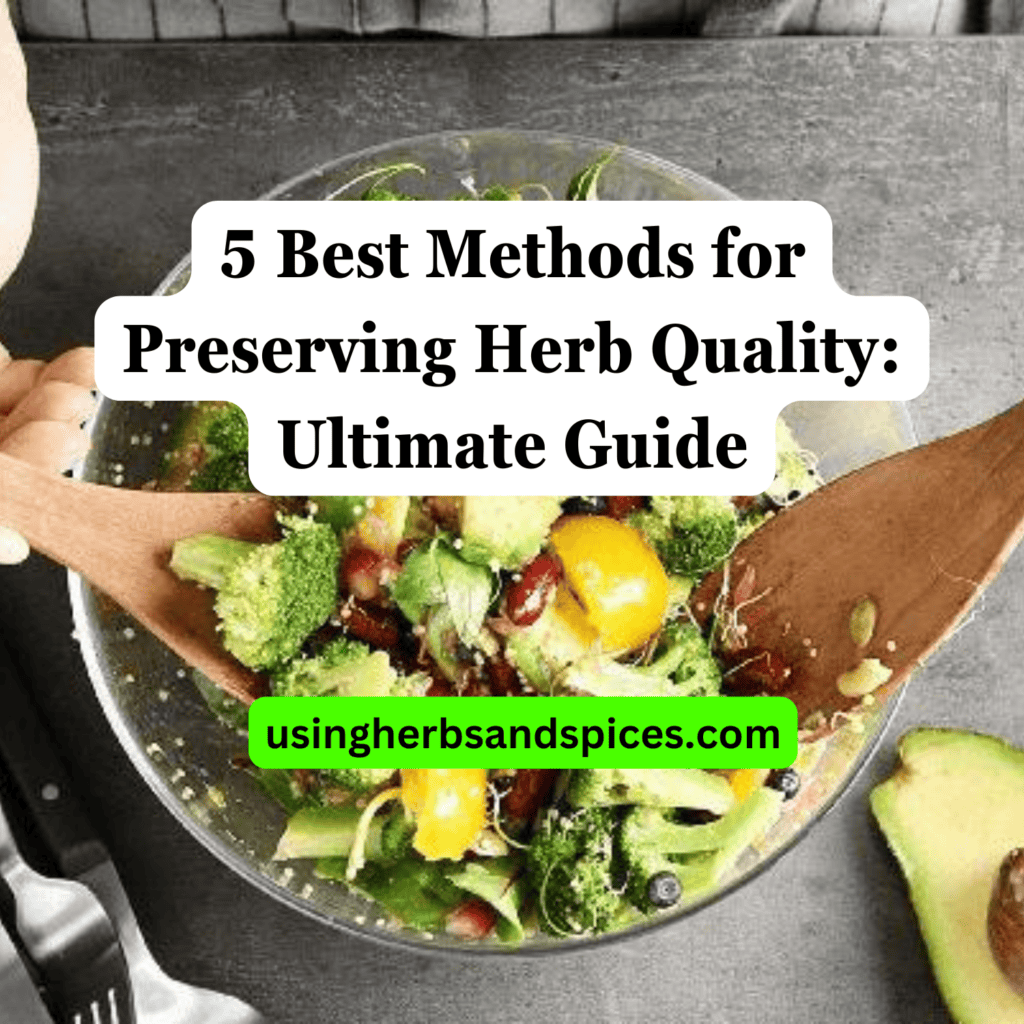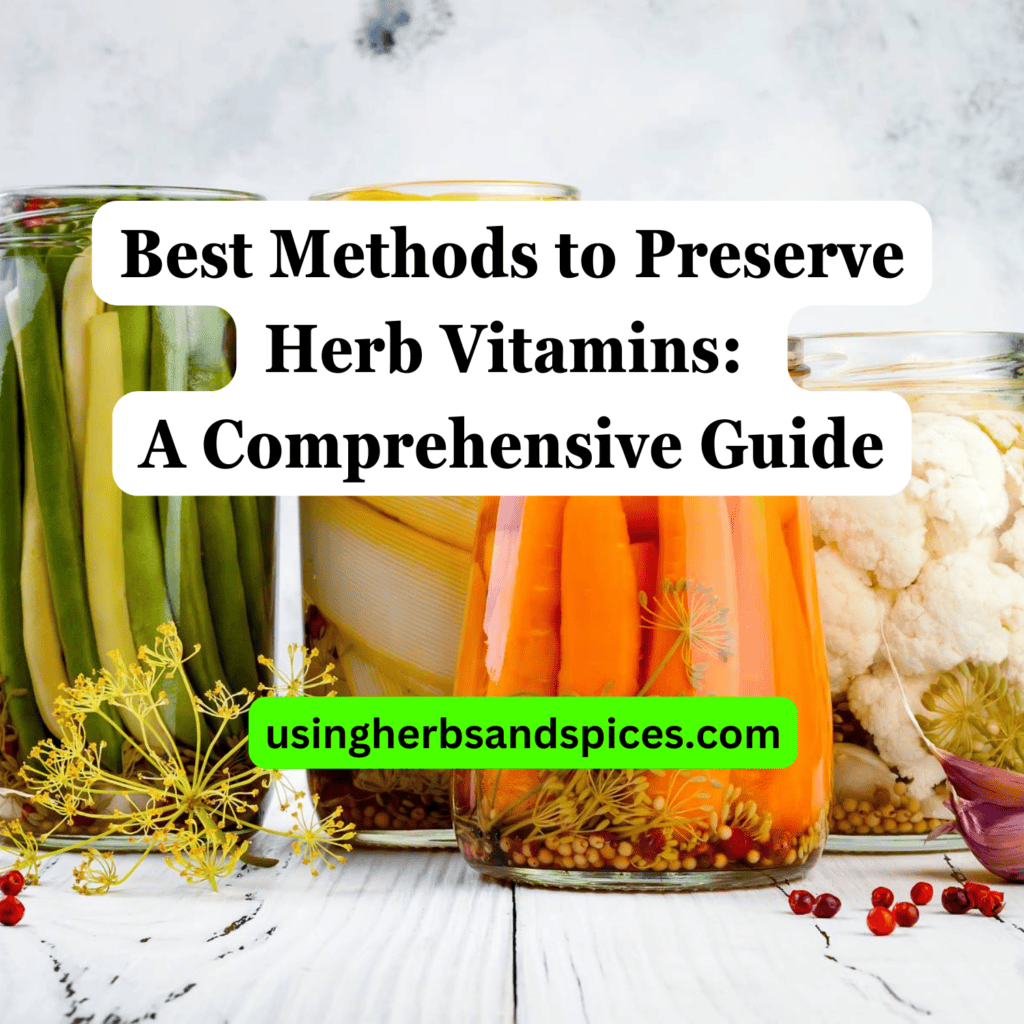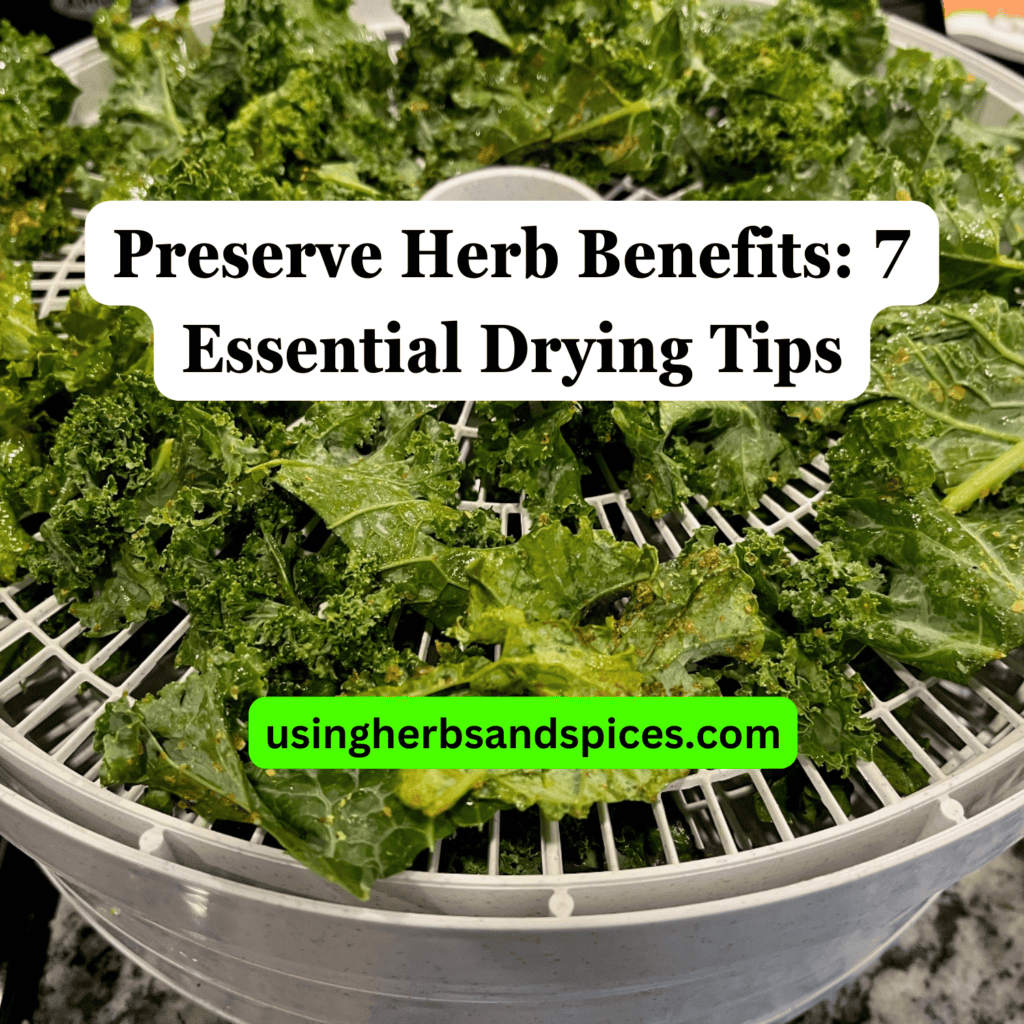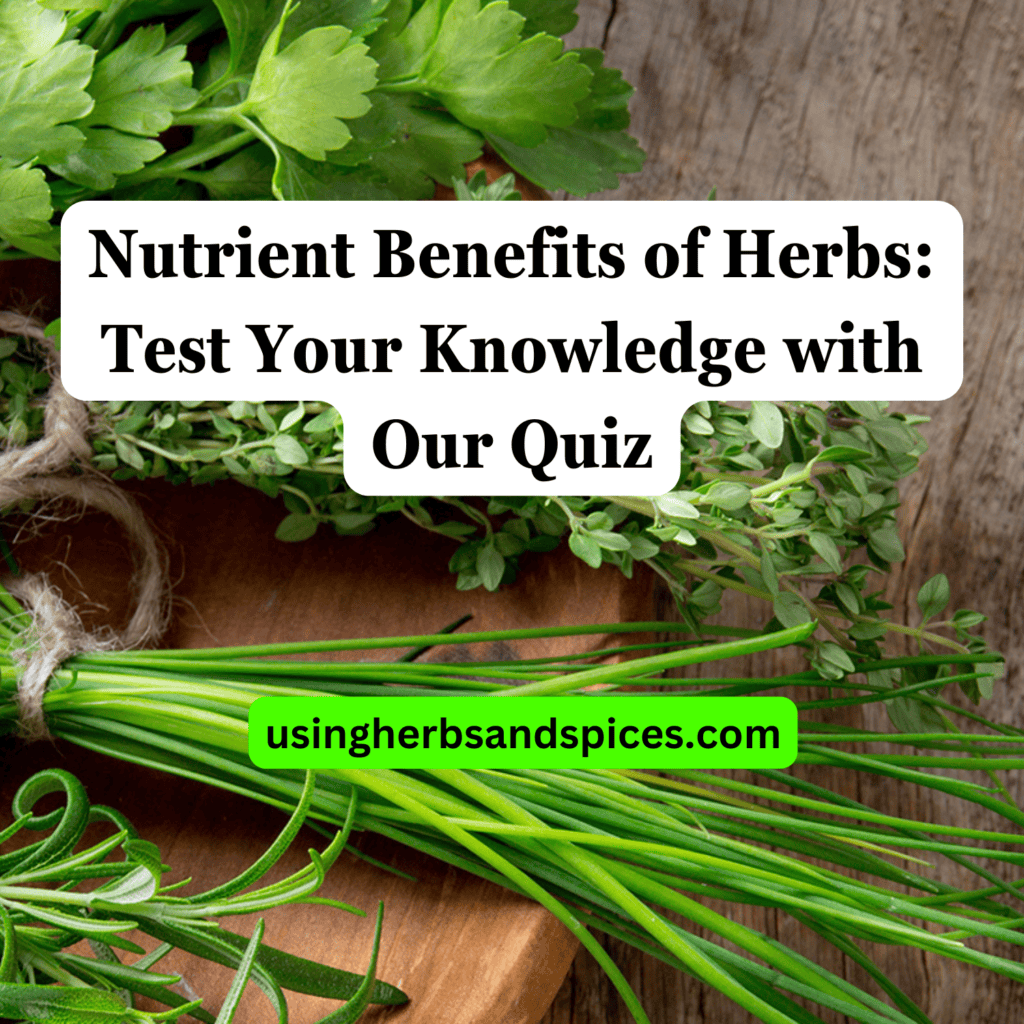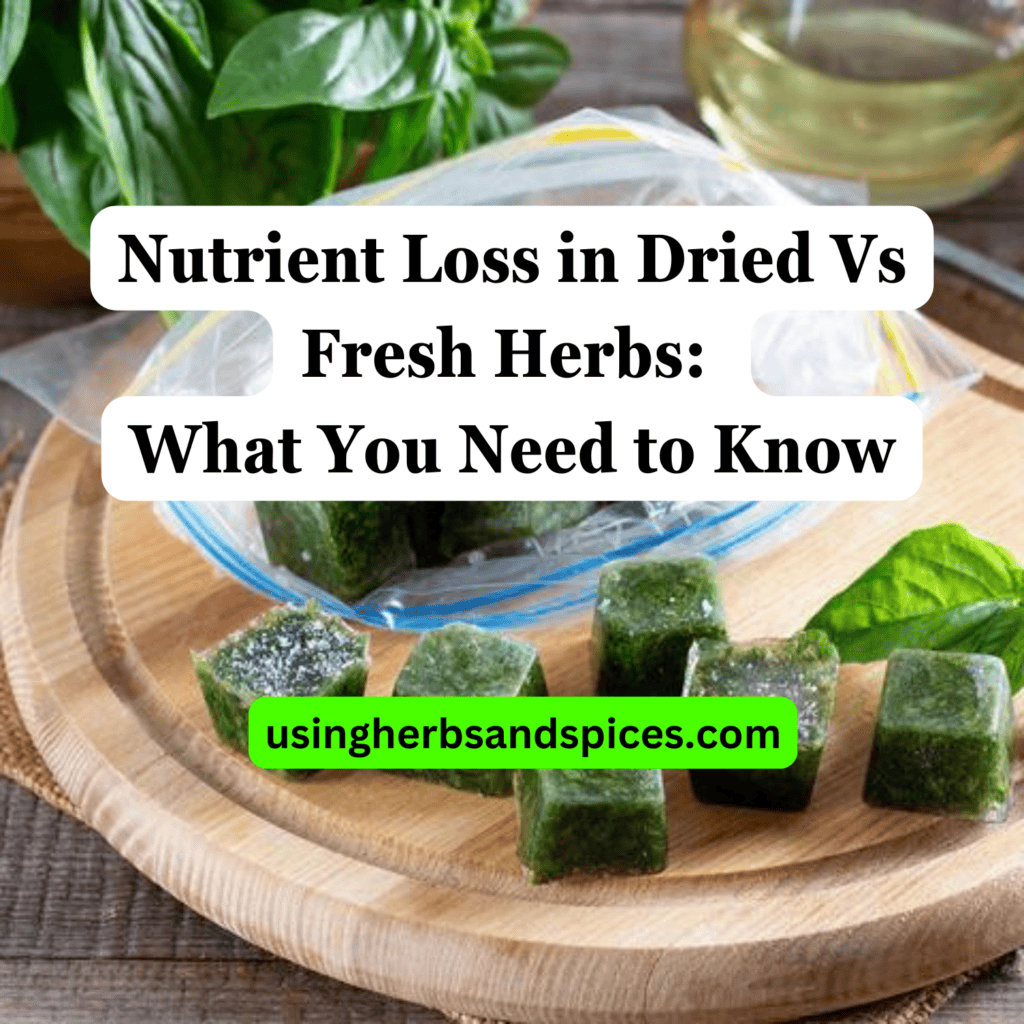SUMMARY: Drying herbs at lower temperatures helps keep their nutrients better, and storing them right can make them last 1-3 years. Avoid common mistakes by choosing slow drying and proper storage to keep your herbs nutritious.
Are you struggling to retain the full nutritional value of your herbs during the drying process?

Perfecting the art of drying herbs while preserving their essential nutrients can significantly enhance their health benefits.
- The scientific principles behind effective nutrient preservation
- Recommended best practices for drying herbs
- Common mistakes that lead to nutrient loss and how to avoid them
- Key strategies for storing dried herbs to maintain their nutritional integrity
Continue reading to discover expert tips that will empower you to preserve the maximum nutritional value of your herbs.
The Science Behind Herb Nutrient Preservation
At the core of herb drying is a deceptively simple process: removing moisture to prevent decay and the growth of microorganisms. However, how this is achieved has profound implications for nutrient retention. Certain phytochemicals, essential oils, and vitamins within herbs are highly sensitive to heat, light, and prolonged exposure to air. Understanding these sensitivities is crucial for choosing a drying method that preserves the valuable compounds responsible for the herbs’ health benefits, flavors, and aromas.
Research indicates that the optimal drying temperature varies among different herbs, suggesting a tailored approach maximizes nutrient preservation. For example, high temperatures can volatilize and degrade sensitive oils and compounds, while too low temperatures may not effectively inhibit microbial growth, leading to spoilage. The loss of potent antioxidants, such as vitamin C and polyphenols, is a particular concern during improper drying processes. Consequently, achieving a balance between adequately drying the herb and maintaining its nutrient profile is the cornerstone of effective herb preservation.
The methodology of drying also plays a pivotal role. Air drying, dehydrating, or using a low-temperature oven can produce varying results in nutrient preservation. Air drying at room temperature, shielded from direct sunlight, often yields the best outcomes for many herbs, preserving essential oils and sensitive vitamins. Meanwhile, technological advancements in dehydrating equipment provide controlled environments that can fine-tune temperature and humidity, potentially offering superior nutrient preservation compared to traditional methods.
In summary, the scientific approach to drying herbs revolves around understanding the delicate balance between removing moisture content effectively to prevent spoilage, while simultaneously preserving the maximum amount of nutrients. By applying these principles, it’s possible to significantly enhance the quality and health benefits of dried herbs.
Best Practices for Drying Herbs
Ensuring your herbs retain the highest amount of nutrients during the drying process requires adherence to several best practices. The key is to balance drying time with temperature, to effectively dehydrate the herbs without degrading their valuable nutrients and oils.
Firstly, harvesting herbs at the right time is crucial. The best time for harvesting most herbs is just before they bloom, when their oil concentrations are at their peak. Early morning, after the dew has evaporated, is the optimal time of day for harvesting, ensuring the herbs are dry and concentrations of aromatic oils are highest.
There are various methods for drying herbs, including air drying, oven drying, and using a food dehydrator. Air drying is the most traditional method and is best suited for herbs with low moisture content, such as rosemary and thyme. This method involves hanging herbs in small bunches in a warm, dry, and well-ventilated area away from direct sunlight to maintain color and nutrient integrity.
For herbs with higher moisture content, like basil and mint, using a food dehydrator or an oven on a very low setting may be more effective. These methods help prevent mold growth by drying the herbs more quickly. When using a dehydrator or oven, it’s essential to keep the temperature between 95°F to 115°F (35°C to 46°C), as higher temperatures can lead to significant nutrient loss.
Regardless of the method chosen, it’s important to check the herbs regularly throughout the drying process. Herbs are sufficiently dry when leaves crumble easily between your fingers, ensuring that they have retained their essential oils and nutrients.
By following these practices, you can maximize nutrient preservation while yielding the best flavor and medicinal properties from your dried herbs.
Common Mistakes to Avoid
When drying herbs, several common mistakes can drastically reduce their nutrient content. One major error is exposing herbs to too much heat. Although it may seem that higher temperatures could speed up the drying process, this actually degrades vitamins and essential oils, diminishing the herbs’ health benefits and flavors. Similarly, leaving herbs to dry in direct sunlight can also result in significant nutrient loss.
Another mistake is improper ventilation. Good air flow is essential for even and effective drying, but without it, herbs can become moldy or mildewed, which not only spoils the batch but can also be harmful if ingested. Finally, over-drying herbs can lead to brittle textures that lose oils and flavor during the grinding process. Ensuring herbs retain a bit of flexibility can indicate that they’ve preserved their intrinsic value.
Avoiding these pitfalls is straightforward with careful attention to temperature, light, air circulation, and drying duration. By steering clear of these common errors, you can ensure your herbs maintain their maximum nutrient levels and beneficial properties.
Storing Dried Herbs for Long-Term Nutrient Preservation
Once your herbs are dried, proper storage becomes the next crucial step for preserving their nutrients over time. The key to maintaining the nutritional quality of dried herbs lies in minimizing their exposure to air, light, and moisture. Airtight containers made of glass or metal are ideal for this purpose, as plastic can sometimes transfer unwanted flavors into the herbs.
Labeling your containers with the herb name and the date of drying helps in managing your stock and using the oldest ones first. Store these containers in a cool, dark place like a pantry or cupboard. Excessive heat or direct sunlight can degrade the herbs more quickly, even if they are sealed.
Humidity is another factor to watch out for. In very moist climates, a desiccant or silica gel packet in the container can help absorb any excess moisture, keeping your dried herbs dry and preventing mold growth. Check your stored herbs periodically for any signs of moisture or spoilage and use them within one to three years for the best flavor and nutritional benefits.
By following these storage guidelines, you can extend the shelf life of your herbs significantly, ensuring that they remain potent and flavorful whenever you need them.
Tips for Maximizing Nutrient Retention
In summarizing the expert tips for preserving herb nutrients, it’s clear that careful attention to the drying and storage processes is crucial for maintaining the highest level of nutritional benefits.
- The science of herb nutrient preservation highlights the need for proper techniques to ensure maximum retention of essential vitamins and minerals.
- Adopting best practices for drying herbs, such as low-temperature techniques and avoiding direct sunlight, plays a significant role in nutrient retention.
- Awareness of common mistakes to avoid during drying can prevent unnecessary loss of nutrient value.
- Effective storage solutions extend the shelf life of dried herbs while preserving their nutritional content, ensuring that your herbs remain beneficial for longer periods.
By integrating these expert insights into your herb preservation routine, you can confidently safeguard the valuable nutrients that contribute to health and wellness.
Expert Tips for Preserving Herb Nutrients FAQs
Why is drying herbs beneficial for nutrient preservation?
Drying herbs is beneficial for nutrient preservation because it significantly reduces the water content, which minimizes the growth of bacteria and fungi. This process helps in extending the shelf life of herbs while retaining their essential oils, flavors, and nutritional value. Careful drying methods, such as air drying or using a dehydrator at low temperatures, ensure that the herbs’ valuable vitamins and minerals are preserved.
Can all herbs be dried using the same method for optimal nutrient preservation?
Not all herbs can be dried using the same method for optimal nutrient preservation, as different herbs have varying levels of moisture, essential oils, and delicate components. Leafy herbs, such as basil and mint, often require different drying techniques compared to woody herbs like rosemary and thyme. Tailoring the drying method to the specific type of herb is crucial for maximum nutrient retention.
What is the impact of sunlight on drying herbs?
Exposing herbs to direct sunlight during the drying process can significantly degrade their essential oils, color, flavor, and nutrients. Sunlight can cause the herbs to dry too quickly, leading to the loss of volatile oils and resulting in diminished medicinal and nutritional value. Therefore, it is recommended to dry herbs in a well-ventilated, dark, and warm area where sunlight cannot directly affect the drying process.
How do temperature and humidity affect the drying process?
Temperature and humidity play critical roles in the drying process of herbs. High humidity levels can prolong the drying time, increasing the risk of mold and bacteria growth. On the other hand, excessively high temperatures can destroy the herbs’ delicate oils and nutrients. Maintaining a balanced environment with low humidity and moderate temperatures is essential for preserving the quality and nutritional value of the herbs.
Is there a difference in nutrient preservation between air-drying and using a dehydrator?
There is a difference in nutrient preservation between air-drying and using a dehydrator. Air-drying is suitable for herbs with low moisture content and can be done at room temperature, which is gentle on the herbs’ nutrients. Dehydrators, on the other hand, allow for precise control of temperature and airflow, which can be beneficial for evenly drying herbs with higher moisture content without degrading their nutrients. Choosing the right method depends on the specific herb and its properties.

